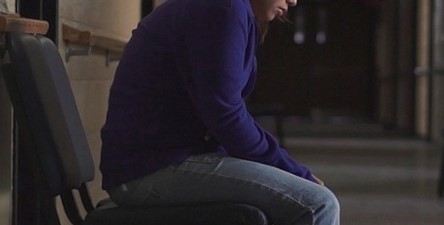Mar 9, 2017 | Native Hope
It wasn’t until well into my teaching career that I began noticing an epidemic. At first it wasn’t apparent to me. Teenagers love to express themselves with shocking hairstyles, unique makeup, and eccentric clothing. This is why the signs of self-mutilation escaped my eye until one of my students hit me full in the face with the truth.
“This is how I deal. Every cut lets me know I am still here,” she told me while visibly hiding her cuts under her half gloves.
I was taken aback. Truly, harming oneself to “feel” never crossed my mind as a possibility. Even more important to consider is the fact that I would have never guessed it was a problem amongst the teenagers at my school, nor that my Native American students were in
an even higher risk category for the behavior.
“You know how when you’re having a bad dream, you pinch yourself to wake up? That’s what self-harm was for me,” explains another former student from the Lower Brule Sioux Tribe. “In a way, it was a call for help without being told you’re ‘looking for attention.’” She adds, “Yeah, I was looking for attention but not for pity. For actual help. These thoughts just don’t ‘go away’!”
Unmasking self-harm
Understanding the concept of self-mutilation or self-harm is difficult for most to comprehend, especially because those who engage in the act are more numerous than most of us know. In fact, statistics show that one in five females and one in seven males engage in some form of self-injury.
Another stat estimates that “one in every 200 American girls between the ages of 13-19 practice 'cutting' [the practice of using a razor blade or knife to make cuts on the body to ease emotional pain] on a regular basis, while as many as 4 percent of adults in the US engage in some form of self-harm.”
It is difficult to estimate an exact percentage of those immersed in these behaviors due to the various forms of the affliction beyond cutting: burning, head-banging, picking wounds, hitting and pinching oneself, intentionally breaking bones, ingesting harmful chemicals, substance abuse, eating disorders, self-piercing—need I go on?
Since the practical research shows that self-harm often begins during the adolescent years, it seems that the disorder may be closely associated with the pains of adolescence. One of my former students endured bullying throughout her childhood and suffered under its weight.
its weight.
She explains, “When you are in a constant battle with your own thoughts, all you know is you need out and now! You take the razor to your desired area. (Mine were my hands, wrists, and thighs.) The sharp pain you feel almost distracts you from these thoughts.
Seeing the blood running out stops your thoughts. In most cases, you slowly start to settle down because something about this is almost poetic—as the blood runs out, so does the negativity.”
We continue to explore the devastating issue of self-harm in part two of "Before the Cut Is Too Deep" here.
Native Hope works with several partners who offer counseling and programs to help young Native Americans develop coping mechanisms. Please join us in our effort to bring more awareness to the affliction of self-harm, and partner with us as we fund valuable ways to assist at-risk youth who are participating in this harmful behavior.
COMMENTS